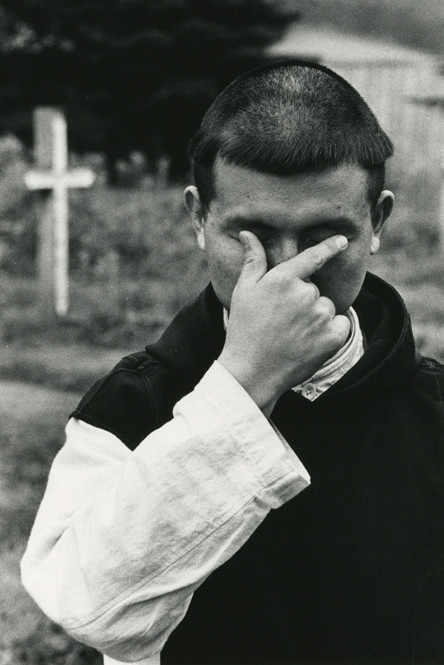[ad_1]
Ikko Narahara, the pioneering Japanese postwar photographer and cofounder of the influential documentary group VIVO, died on January 19 at the age of 88. In a statement to ArtAsiaPacific, Taka Ishii Gallery in Tokyo reported the cause of death as heart failure.
Narahara found international acclaim through his monochromatic “personal documents,” as he often called them, that captured surreal, fleeting moments. Oftentimes, his subject was the impact of modernity on closed-off communities—a women’s prison in Japan’s Wakayama Prefecture in one series, or a monastery in Hokkaido rendered in eerie black-and-white in another.
Narahara was born 1931 in Fukuoka Prefecture, and was uprooted often as child for his father’s work as a prosecutor. The aritst graduated from Tokyo’s Chuo University with a law degree in 1954, and the following year enrolled in a master’s program specializing in art history. In 1955 Narahara joined Jitsuzaisha (Real Existence), an avant-garde artist group cofounded by Masuo Ikeda and Ay-O. As a member of Jitsuzaisha, his social circle expanded to include some of postwar Tokyo’s most formative figures, including Shuzo Takiguchi, Tatsuo Ikeda, and On Kawara. At that time, he also met photographers Shomei Tomatsu and Eikoh Hosoe, and in 1959 they founded the documentary collective VIVO.
His debut solo exhibition in 1956 at Matsushima Gallery was an instant critical success. In it, he paired images of a village in the Kagoshima Prefecture decimated by the Sakurajima volcano with bleak snapshots of life in a nearby coal-mining town. His next exhibition earned him the Japan Photo Critics Association’s Most Promising Photographer Award.
From 1962 to 1965, Narahara was based in Paris, and during that time, he traversed Europe, photographing what he saw along the way. He spent the early ’70s in New York, documenting America’s rural pockets in the same nomadic fashion. He returned to Japan in 1999, and he served as a professor at Kyushu Sangyo University until 2005.
Solo retrospectives of his work have been staged at international venues including the Maison Européenne de la Photographie in Paris (2002–03) and the Tokyo Metropolitan Museum of Photography (2004). Among his many accolades are the Photographer of the Year Award from the Japan Photo Critics Association (1967), the Mainichi Arts Award (1968), and the Medal with Purple Ribbon (1996). His work is held in the collections of the Museum of Modern Art in New York, Museum of Fine Arts, Boston, and the International Center of Photography in New York, among others.
[ad_2]
Source link


